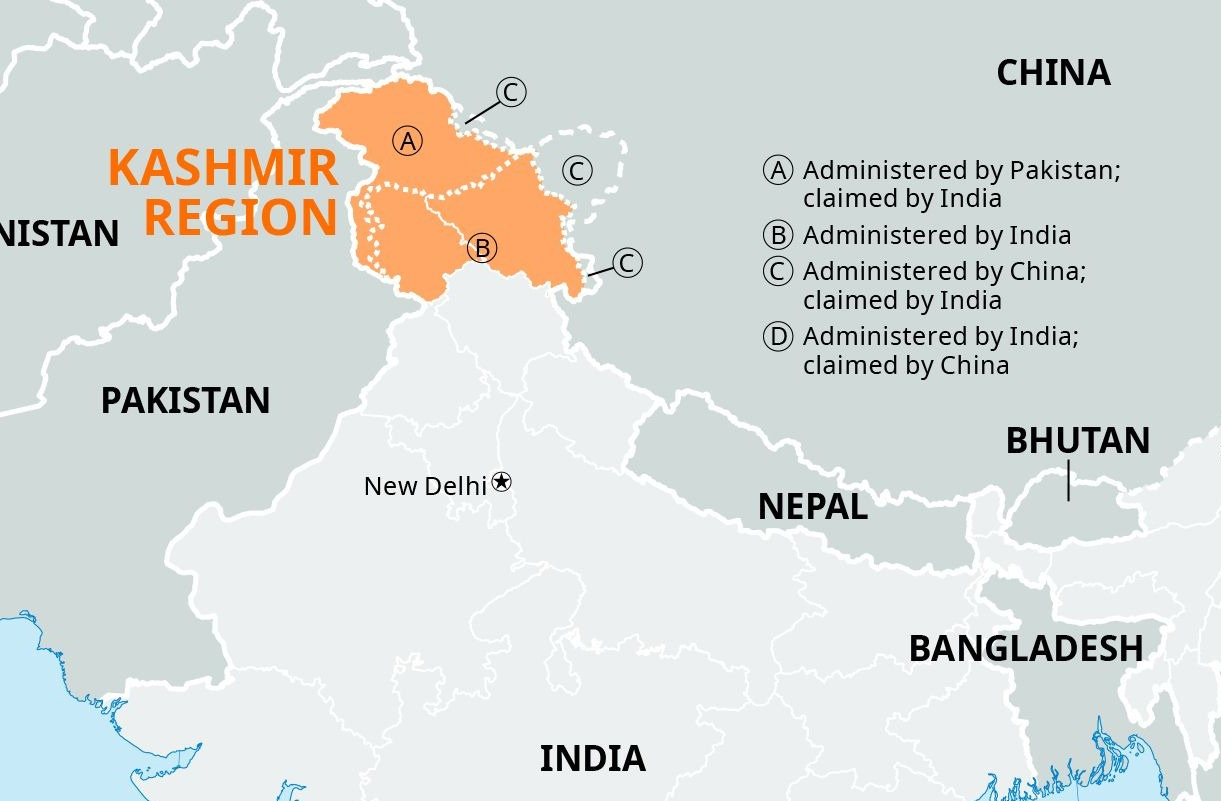The Truth About the India-Pakistan Crisis
What you need to know about the crisis, its history, and what resolution might look like
Confused by what’s happening between India and Pakistan? Here’s your breakdown.
On April 22, 2025, a devastating terrorist attack in Pahalgam claimed the lives of 25 Indians and one Nepali tourist. As the dust settled, India pointed fingers at Pakistan-based militant groups, vowing swift and decisive retaliation. Pakistan, for its part, unequivocally condemned the attack, denied any involvement, and demanded concrete evidence to substantiate the claims. Islamabad (Pakistan’s Capitol) even went a step further, calling for an independent investigation to determine the real culprits—an offer that New Delhi promptly rejected. So where does that leave us now and why are tensions and violence still escalating? Let’s Address This.
Less than two weeks after the initial act of violence, on May 6, 2025, India launched targeted strikes on six locations within Pakistan. Civilian casualties were reported, and while India claimed that only militant bases were hit, Pakistan countered with claims of indiscriminate bombing of civilian areas. In the immediate aftermath, Pakistan announced that it had shot down six Indian fighter jets, including a Rafale, along with several drones.
The situation escalated further when 125 Indian and Pakistani fighter jets engaged in a dramatic hour-long dogfight—the largest aerial battle since World War II. The skies over South Asia were filled with roaring engines and plumes of smoke, signaling a terrifying reminder of the volatility between these two nuclear-armed nations.
But to understand these tensions today, we need to take a step back at understand history.
The Historical Context: A Legacy of Partition and Conflict
To understand this crisis, we must go back to the origins of the India-Pakistan conflict, rooted in the 1947 Partition of British India. When the subcontinent was divided, princely states, including Kashmir, were given the option to join either newly-formed India or Pakistan, or to remain independent. Kashmir’s Maharaja Hari Singh hesitated, hoping for independence, but eventually acceded to India under controversial circumstances during a tribal invasion from Pakistan. Thus began the bitter dispute over Kashmir, a conflict that has simmered—and often boiled over—for nearly eight decades.
In 1948, Pakistan’s then-Foreign Minister, Sir Muhammad Zafrullah Khan, advocated forcefully at the United Nations for a plebiscite (i.e. the direct vote of all the members of the electorate) to allow Kashmiris to determine their own fate. He proposed a peace plan centered around three core elements:
A fair plebiscite under international observation.
The withdrawal of troops from both sides.
A no-war pact to ensure stability and peace.
India, however, rejected these proposals, cementing the path to a long and bloody conflict.
UN Resolutions and India’s Military Presence
In 1948, the United Nations Security Council passed Resolution 47, calling for a plebiscite in Kashmir to allow its people to decide their future. Despite this international mandate, a plebiscite never took place, and India has since stationed over 500,000 troops in Indian-administered Kashmir, citing the need to suppress armed rebellion and maintain order. This massive military presence has resulted in a myriad of human rights abuses, including arbitrary detentions, disappearances, and a culture of impunity for Indian security forces.
The situation further deteriorated in 2019, when India’s ruling BJP government unilaterally revoked Kashmir’s special status under Article 370 of its Constitution. This move, widely condemned by international human rights organizations, effectively stripped Kashmiris of their limited autonomy and opened the floodgates for settler colonialism in the disputed region.
The Simla Agreement and Diplomatic Stalemates
The diplomatic freeze deepened as India clung to its position that Kashmir is strictly a bilateral issue, citing the 1972 Simla Agreement, which mandates that all disputes between the two nations be resolved bilaterally. Pakistan, in contrast, has consistently advocated for international mediation, highlighting the critical role of global institutions like the United Nations to broker peace and ensure justice for the Kashmiri people.
India and Pakistan have fought three of their four wars over Kashmir, with tensions flaring up repeatedly, most notably during the 2019 Pulwama attack. Each escalation carries with it the grim specter of nuclear conflict, a nightmare scenario for both regional stability and global security.
Now In 2025, A Call for Justice and Accountability
The recent conflict is not just another chapter in a long history of skirmishes; it is a dire warning of what unchecked militarism and nationalistic zeal can produce. The people of Kashmir—women, children, and families—are caught in the crossfire, their voices muffled by military occupation and political posturing.
This is not just a call for a ceasefire; it is a call for accountability, for adherence to international law, and for global recognition of the basic human rights of Kashmiris. We cannot sit idly by while two nuclear-armed nations edge ever closer to catastrophe, using the lives of innocent civilians as bargaining chips.
Justice demands more than condemnation; it demands action. Now is the time for the international community to pressure both India and Pakistan to return to the negotiating table, to implement the UN-mandated plebiscite, and to pave the way for lasting peace. Self-determination should not be a privilege for the powerful, but a right especially protected for the otherwise powerless.
In the coming days, I will continue to provide updates and analysis on this rapidly evolving situation. This is about more than geopolitics—it’s about the fundamental human rights of millions. For those committed to human rights and absolute justice, I encourage you to subscribe and support our efforts. Together, we can hold power accountable, elevate the voices of the oppressed, and work towards lasting justice.





Thank you for explaining this clearly. It is an understatement that India was quick to blame Pakistan with no hard evidence. AND conveniently with those 500,000 Indian troops (different independent reporters have said 700,000), somehow NONE of them were around when the attack happened? It's all so obnoxious and already, people are trying to gaslight online on Instagram about who is at fault, just like what happened right after 10/7 with the fake settler colony.
The history of Kashmir is tragic and my heart aches for their suffering. I am a Pakistani and hope for an independent Kashmir. War mongers are beating the drum of an all out conflict but I pray both nations find sense and restraint.